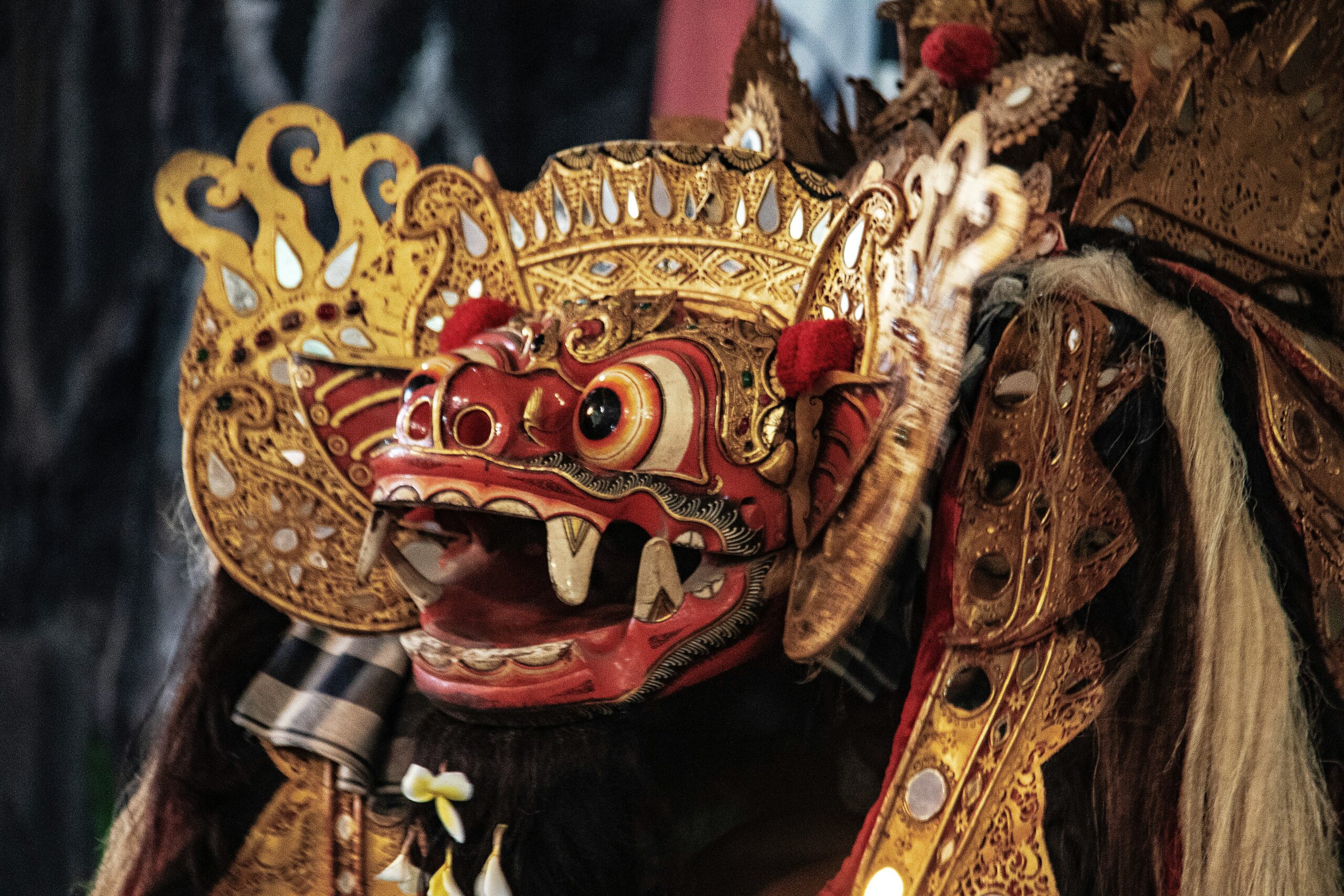Barong is one of Bali’s cultural icons, symbolizing the embodiment of goodness in Hindu mythology. As a mythological creature, Barong is believed to possess supernatural powers, serving as a protector of society against negative influences.
The term “Barong” is thought to originate from the Sanskrit word bharwang, meaning “bear,” although in Balinese tradition, Barong’s form more closely resembles a combination of a lion, tiger, or ox.
The Barong art form is believed to have originated from pre-Hindu cultural traditions that later integrated with Hindu and Buddhist influences.
The tapel or mask of Barong Ket, for example, displays a fusion of Hindu culture with Buddhist elements, similar to those found in Buddhist-practicing countries such as Japan and China. This suggests a Chinese cultural influence in the Barong tradition of Bali.
One of the most well-known myths associated with Barong is the eternal battle between good (dharma), represented by Barong, and evil (adharma), represented by Rangda.
In this story, Barong serves as a guardian fighting against malevolent forces to maintain the balance of the universe.
In Bali, there are several types of Barong, each with unique characteristics and a distinct mythological background, including:
- Barong Ket (Keket): The most common type of Barong, featuring a form that combines elements of a lion, tiger, and ox. Barong Ket is often performed in religious ceremonies as well as for entertainment purposes for tourists.
- Barong Landung: A pair of giant puppets representing tall human figures. This Barong is closely linked to the legend of Jaya Pangus, who married Kang Cing Wei, a Chinese woman, reflecting the assimilation of Chinese culture into Balinese traditions.
- Barong Brutuk: Originating from Trunyan, this Barong has a face made of coconut shells and a body covered with dried banana leaves. Dancers performing Barong Brutuk must undergo a purification ritual before the performance, emphasizing the sacredness of this tradition.
As time progresses, Barong performances have evolved beyond their sacred ritualistic functions to become a major attraction for Bali’s tourism industry.
Barong performances are now regularly staged in villages such as Batubulan and Singapadu, drawing both domestic and international visitors.
Despite this, the spiritual values and its role as a protector remain preserved in every performance.
Thus, Barong is not only a symbol of the eternal struggle between good and evil in Hindu mythology but also a reflection of Bali’s rich cultural heritage that continues to thrive and evolve to this day. (BT)
Image source: unsplash.com/Nick Fewings





